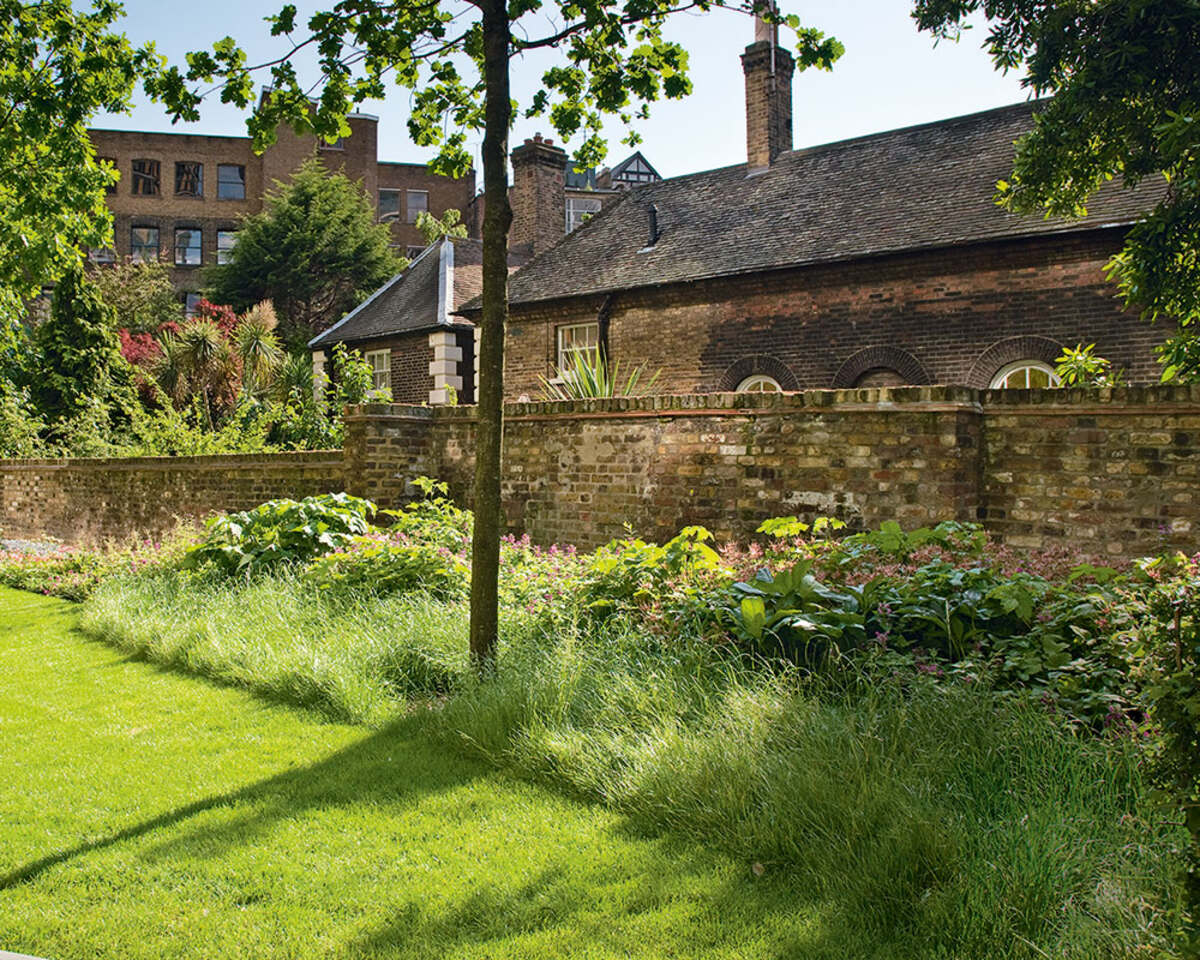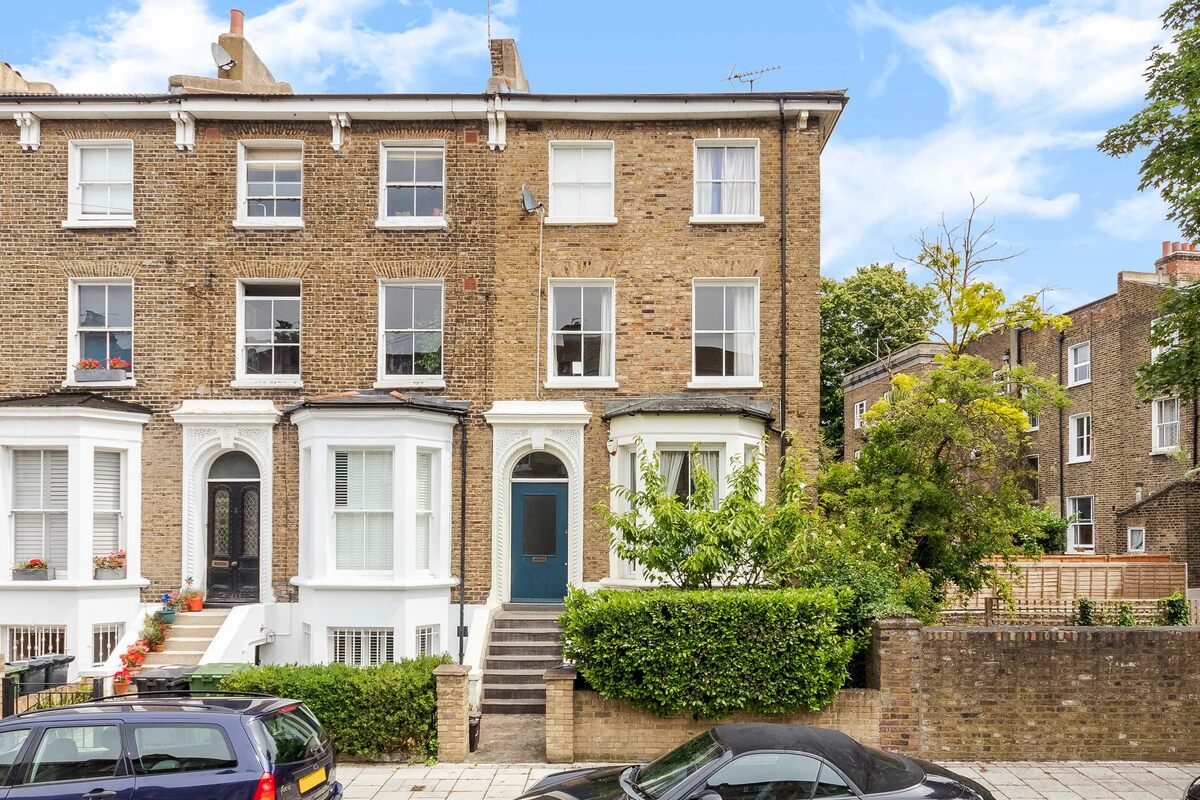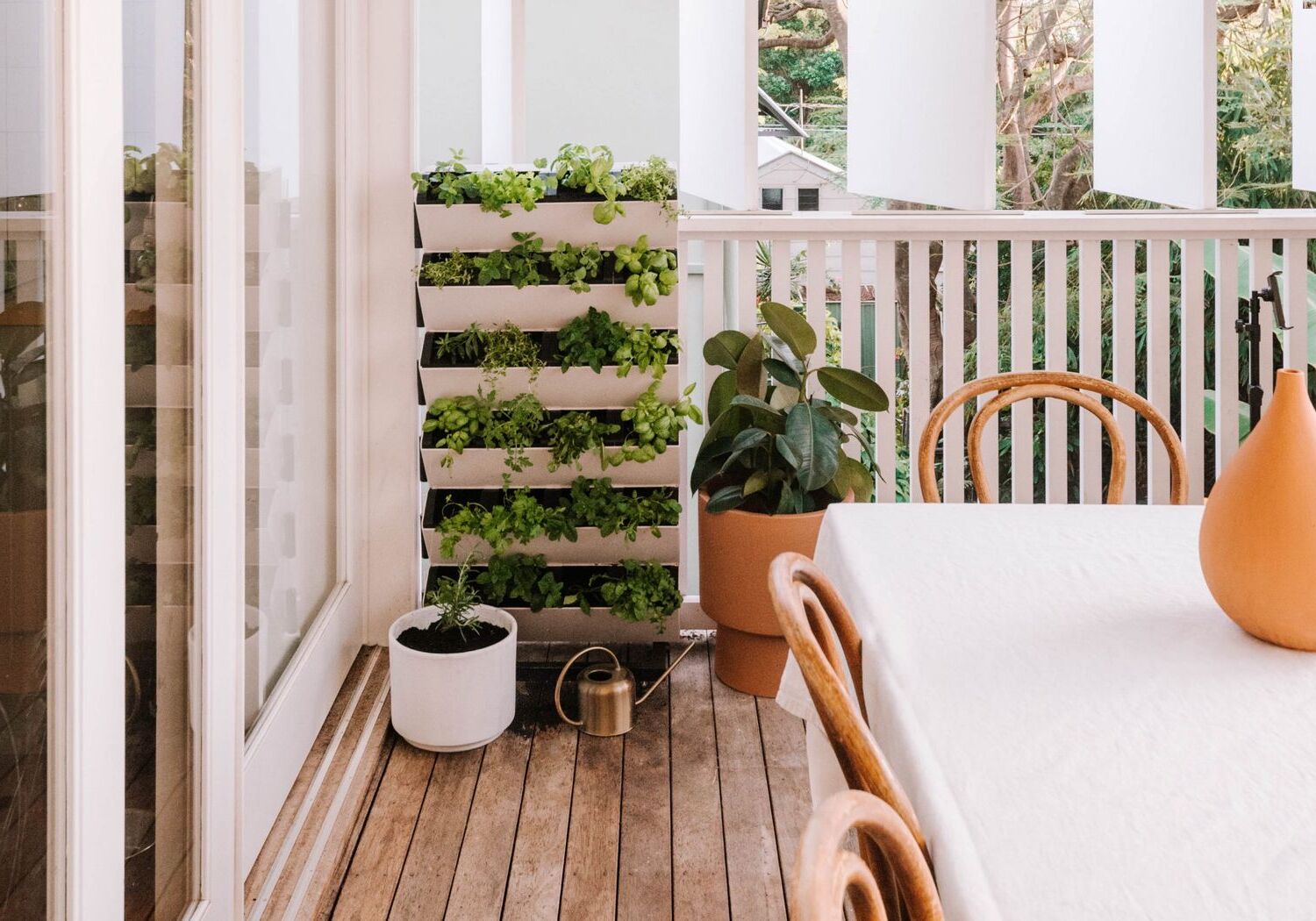Home>Garden Essentials>Garden Storage>An Urban Woodland Garden On London’s South Bank


Garden Storage
An Urban Woodland Garden On London’s South Bank
Modified: January 19, 2024
Discover a unique urban woodland garden on London’s South Bank offering storage solutions for your outdoor space. Visit our site for innovative storage options that blend seamlessly with nature.
(Many of the links in this article redirect to a specific reviewed product. Your purchase of these products through affiliate links helps to generate commission for Storables.com, at no extra cost. Learn more)
Introduction
Welcome to our exploration of a hidden gem nestled along London’s South Bank – an urban woodland garden that combines the tranquility of nature with the hustle and bustle of city life. This enchanting sanctuary provides a much-needed respite from the concrete jungles that surround it, offering visitors a unique and immersive experience amidst the backdrop of towering skyscrapers and the flowing River Thames.
The urban woodland garden is the result of a collaboration between landscape architects, conservationists, and local authorities who recognized the importance of creating green spaces in urban environments. It serves as a testament to the power of nature to transform and uplift communities, fostering a connection between people and the natural world.
With a focus on sustainability and ecologically-friendly practices, this urban oasis not only showcases the beauty of nature, but also serves as a model for urban planning that promotes biodiversity and environmental conservation. From its innovative design to its carefully selected plant species, every element of the garden has been thoughtfully crafted to create an immersive experience that delights the senses and nurtures the soul.
In this article, we will take you on a journey through this unique urban woodland garden, exploring its location, design, plant selection, and the wildlife it attracts. We will also delve into the maintenance and management practices that ensure the longevity of this green haven, as well as the community involvement that makes it a beloved part of the local neighborhood.
So come along as we wander through the paths of this hidden sanctuary, uncovering the secrets it holds and discovering the magic of nature amidst the buzz of city life.
Key Takeaways:
- The urban woodland garden on London’s South Bank seamlessly blends nature and modern design, creating a serene oasis amidst the city’s hustle. Its sustainable practices and diverse plant selection support wildlife and promote ecological balance.
- Community involvement is at the heart of the garden’s success, with events, educational programs, and volunteer opportunities fostering connections and environmental stewardship. Visitors can escape the urban buzz and reconnect with nature in this hidden sanctuary.
Read more: How To Fix E2 Error In A Washing Machine
Location and Overview
The urban woodland garden is situated in the heart of London’s South Bank, a vibrant area known for its cultural attractions, art galleries, and iconic landmarks. The garden’s strategic location along the riverfront makes it easily accessible to both locals and tourists, providing a serene escape from the hustle and bustle of the city streets.
Spanning over several acres, the garden is a harmonious blend of indigenous flora and contemporary design, seamlessly integrating nature into the urban landscape. As visitors step into the garden, they are greeted by a landscape that transports them from the cityscape into a tranquil woodland setting, complete with winding pathways, lush greenery, and charming seating areas.
The garden’s layout has been carefully planned to create a sense of exploration and discovery. It features a series of interconnected zones, each showcasing different aspects of nature and offering distinct experiences. From open meadows and wooded groves to tranquil ponds and cascading waterfalls, the garden presents a diverse range of habitats that attract a variety of flora and fauna.
One of the highlights of the garden is its panoramic views of the River Thames and the city skyline. As visitors stroll along the pathways, they can enjoy breathtaking vistas of iconic landmarks such as the London Eye, the Shard, and St. Paul’s Cathedral. This juxtaposition of nature and urban architecture creates a unique and captivating ambiance.
The garden is designed to be accessible to all, with wheelchair-friendly paths, benches for resting, and informative signage to educate visitors about the various plant species and wildlife present in the area. It also hosts regular community events and activities, including guided nature walks, gardening workshops, and art exhibitions, further enriching the visitor experience and fostering a sense of community.
Overall, the location and overview of this urban woodland garden make it a must-visit destination for nature lovers, city dwellers seeking a moment of tranquility, and anyone looking to reconnect with the beauty of the natural world amidst the urban landscape.
Design and Concept
The design of the urban woodland garden is a masterpiece of harmonizing nature and contemporary aesthetics. Drawing inspiration from the surrounding urban environment, the garden seamlessly blends natural elements with modern design principles, creating a captivating and immersive experience.
The garden’s design concept revolves around the idea of creating a journey through different habitats, each representing a unique ecological niche. This approach not only provides visitors with a diverse and dynamic experience but also fosters biodiversity by attracting a wide range of plant and animal species.
The pathways within the garden wind through expansive open areas, lush meadows, and dense groves, offering visitors a sense of exploration and discovery. The design team has carefully considered sightlines and vistas, strategically placing foliage and structures to create a sense of enclosure and privacy, while still allowing glimpses of the surrounding cityscape.
Water is an essential element in the garden’s design. Tranquil ponds, gently babbling streams, and cascading waterfalls provide a soothing soundtrack while also attracting wildlife. These water features also serve as focal points, creating areas for reflection and contemplation.
In terms of materials, the garden incorporates sustainable and locally sourced materials wherever possible. Recycled wood, natural stone, and eco-friendly composite materials have been used to construct seating areas, walkways, and structures. This commitment to sustainable design aligns with the garden’s ethos of environmental conservation.
Interspersed throughout the garden are carefully placed seating areas, where visitors can rest and take in the beauty of their surroundings. These seating areas are designed to blend seamlessly with the natural landscape, with materials and colors that mimic the surrounding environment.
Art installations are also featured throughout the garden, adding an extra layer of intrigue and creativity. These artistic elements, ranging from sculptures to interactive installations, breathe life into the space, inspiring reflection and inviting visitors to engage with their surroundings in unique ways.
Ultimately, the design and concept of the urban woodland garden create an enchanting and harmonious space where nature, design, and urban living coexist. Visitors are transported from the busy streets of the city into a serene oasis, where they can reconnect with nature, find solace, and rejuvenate their spirits.
Plant Selection
The plant selection in the urban woodland garden has been thoughtfully curated to not only create a visually stunning environment but also provide a habitat for a diverse range of wildlife. Native and adaptive plant species have been meticulously chosen to thrive in the urban setting while promoting biodiversity and ecological balance.
One of the key considerations in plant selection is to ensure a continuous display of color and interest throughout the seasons. The garden features a mix of flowering plants, grasses, and evergreen trees that provide visual appeal and textural diversity year-round. From the vibrant blooms of wildflowers in spring to the fiery foliage of deciduous trees in autumn, there is always something captivating to behold.
Native plant species play a vital role in supporting local wildlife and promoting ecological sustainability. These plants have evolved over time to adapt to the local climate and soil conditions, making them resilient and well-suited to thrive in the urban environment. In addition to providing food and shelter for local birds, butterflies, and insects, native plants also require less water and maintenance, reducing the garden’s ecological footprint.
The plant selection in the urban woodland garden is also designed to create a layered and textural landscape. Tall trees provide shade and structure, while shrubs and bushes add depth and create secluded areas. Groundcover plants and grasses contribute to the overall biodiversity and help prevent soil erosion.
To enhance the sensory experience, the garden includes aromatic plants that release delightful scents into the air. Fragrant herbs, flowering shrubs, and climbers add a touch of enchantment to the garden, enticing visitors to engage their sense of smell as they explore the space.
Throughout the garden, there are also plantings specifically chosen to attract pollinators such as bees and butterflies. These pollinator-friendly plants not only serve as a food source for these important creatures but also play a crucial role in pollinating other plant species, ensuring the continuity and health of the garden ecosystem.
Overall, the plant selection in the urban woodland garden is a harmonious blend of beauty, functionality, and environmental consciousness. Through the careful selection and placement of plants, the garden not only creates a visually captivating experience but also provides a haven for wildlife and contributes to the overall health and sustainability of the urban ecosystem.
Consider planting native trees and shrubs to attract local wildlife and create a more sustainable urban ecosystem. Choose species that are well-suited to the local climate and soil conditions.
Wildlife and Biodiversity
The urban woodland garden is not only a beautiful retreat for visitors but also a thriving habitat for a wide array of wildlife. Through its carefully designed landscape and diverse plant selection, the garden provides a sanctuary for numerous species, promoting biodiversity and ecological balance.
One of the highlights of the garden is the abundance of bird species that call it home. From songbirds and waterfowl to raptors and migratory birds, the garden’s various habitats offer nesting sites, food sources, and shelter for these feathered friends. Visitors can spot robins, blackbirds, and thrushes hopping among the shrubs, while herons and ducks glide gracefully across the tranquil ponds.
Butterflies and bees are another vital component of the garden’s ecosystem. Native wildflowers and nectar-rich plants attract these pollinators, ensuring the reproduction and survival of various plant species. Visitors can witness the delicate dance of butterflies flitting from blossom to blossom, while bees hum busily, collecting pollen and spreading it from flower to flower.
The water features in the garden also attract a variety of aquatic life. Frogs, newts, and dragonflies thrive in and around the ponds, adding a touch of enchantment to the ecosystem. The cascading waterfalls provide a soothing backdrop and create a conducive environment for the growth of aquatic plants, further enhancing the biodiversity of the garden.
Small mammals such as hedgehogs and squirrels can be spotted scurrying among the trees and bushes, while foxes and bats often make nighttime appearances. The garden’s dense foliage and carefully placed nesting boxes provide suitable habitats and shelter for these creatures, allowing them to thrive in an urban environment.
The presence of wildlife not only adds to the allure of the garden but also serves as a vital indicator of the overall ecological health. By creating a habitat that supports a diverse range of species, the garden contributes to the conservation efforts of local flora and fauna, aiding in the preservation of biodiversity in the midst of a bustling city.
To further enhance biodiversity and promote wildlife conservation, the garden regularly collaborates with local conservation organizations and conducts educational programs. These initiatives empower visitors to learn about the importance of protecting and preserving the natural world, fostering a sense of responsibility and appreciation for the delicate balance of life.
In essence, the urban woodland garden is a thriving ecosystem that provides a safe haven for a diverse range of wildlife. By creating a harmonious balance between nature and the urban landscape, the garden inspires visitors to reconnect with the wonders of the natural world and actively contribute to the conservation of our delicate ecosystems.
Maintenance and Management
The successful maintenance and management of the urban woodland garden are essential to ensure its continued beauty, functionality, and ecological sustainability. A dedicated team of gardeners, landscape architects, and conservationists work tirelessly to uphold the garden’s high standards and preserve its natural balance.
Regular maintenance tasks include pruning, weeding, and watering to keep the garden looking its best. The gardeners follow sustainable practices, such as using organic fertilizers and pesticides, to minimize the environmental impact and protect the health of the plants, animals, and visitors.
To maintain the integrity of the garden’s design, the landscaping team regularly conducts assessments and tweaks certain elements as needed. This could involve relocating plants, adjusting seating areas, or adding new features to enhance the visitor experience while preserving the overall vision of the garden.
Water management is a crucial aspect of garden maintenance, especially in an urban environment. The garden employs various strategies to conserve and efficiently utilize water resources. These include rainwater harvesting systems, drip irrigation, and regular monitoring of soil moisture levels. By carefully managing water usage, the garden reduces waste and ensures the optimal health of the plants.
In addition to day-to-day maintenance, the garden also engages in long-term management strategies to sustain its ecological balance. This includes regularly assessing and controlling invasive plant species that may threaten the native flora and disrupt the ecosystem. Furthermore, the garden implements habitat restoration initiatives, such as reintroducing native plant species and creating additional nesting sites, to support the diverse wildlife that calls the garden home.
Education and interpretation play a vital role in the maintenance and management of the urban woodland garden. The garden offers guided tours, workshops, and educational programs that teach visitors about the importance of environmental conservation, sustainable practices, and the significance of biodiversity. By raising awareness and knowledge, the garden fosters a sense of stewardship among visitors, inspiring them to become advocates for nature in their own communities.
The garden also encourages community involvement, inviting local residents and volunteers to participate in regular gardening activities and conservation efforts. This collaborative approach not only helps maintain the garden but also strengthens community bonds and instills a sense of ownership and pride over this green urban sanctuary.
Overall, the maintenance and management of the urban woodland garden are guided by a commitment to sustainability, environmental stewardship, and community engagement. Through careful planning, sound horticultural practices, and active involvement from both professionals and the community, the garden thrives as a vibrant and well-preserved haven amidst the urban landscape of London’s South Bank.
Community Involvement
The urban woodland garden on London’s South Bank not only serves as a beautiful green space but also fosters a strong sense of community and encourages active involvement from local residents and visitors alike. The garden’s success lies in its ability to bring people together, creating a shared space for connection, collaboration, and meaningful engagement.
One of the ways the garden promotes community involvement is through regular events and activities. These include guided nature walks, gardening workshops, art exhibitions, and educational programs for children and adults. These events not only provide opportunities for learning and skill development but also encourage people to immerse themselves in the natural environment and forge connections with others who share a love for nature.
The garden also partners with local schools and community organizations, offering tailored educational programs that promote environmental awareness and hands-on learning. Children have the chance to explore the garden, learn about native plants and wildlife, and develop a deeper appreciation for the natural world. These initiatives not only provide valuable educational experiences but also create a sense of stewardship and responsibility in the younger generation.
Volunteer programs are another key component of community involvement in the garden. Individuals from the local community can volunteer their time and skills in various capacities, such as gardening, maintenance, and events organization. These volunteers play a vital role in the ongoing care and development of the garden, forming a strong community bond while actively contributing to the preservation and enhancement of this green oasis.
Community engagement is not limited to volunteering and events. The garden also provides spaces for local artists and artisans to showcase their work, further cultivating a sense of pride in the local creative community. Sculptures, installations, and temporary art exhibitions add an extra layer of beauty and inspiration to the garden, reflecting the diverse talents and creativity of the area.
The garden’s design and layout also prioritize inclusivity and accessibility, ensuring that people of all ages and abilities can enjoy and benefit from the space. Wheelchair-friendly paths, accessible seating areas, and sensory elements enable everyone to experience the beauty and tranquility of the garden, fostering a sense of belonging and inclusion.
Overall, community involvement is at the heart of the urban woodland garden. By actively engaging with the local community, fostering connections, and providing meaningful opportunities for participation, the garden creates a shared space where people can come together, appreciate nature, and build a strong sense of belonging and pride in their community.
Conclusion
The urban woodland garden on London’s South Bank is a hidden oasis that marries the beauty of nature with the vibrancy of city life. Through its innovative design, thoughtful plant selection, and commitment to sustainability, the garden creates a harmonious and immersive experience for visitors while promoting biodiversity and ecological balance.
From the moment visitors step into the garden, they are transported from the bustling streets of the city into a serene sanctuary where they can connect with nature, find solace, and rejuvenate their spirits. The carefully designed pathways lead them through a tapestry of meadows, groves, and water features, offering a sense of exploration and discovery.
The garden’s plant selection, featuring native and adaptive species, not only provides a visually stunning display but also supports a wide range of wildlife. Birds, butterflies, bees, and small mammals thrive in this lush habitat, creating a diverse and balanced ecosystem within the heart of the city.
The maintenance and management of the garden are paramount to its success, with a dedicated team ensuring its ongoing beauty and ecological sustainability. From regular maintenance tasks to long-term conservation initiatives, the garden is meticulously cared for, allowing it to flourish and evolve over time.
However, the true strength of the urban woodland garden lies in its ability to foster community involvement and engagement. Through educational programs, volunteering opportunities, and community partnerships, the garden becomes a shared space where residents and visitors can connect, learn, and work together towards a common goal of environmental stewardship.
In conclusion, the urban woodland garden on London’s South Bank is more than just a green space; it is a testament to the power of nature to transform and uplift communities. It showcases the harmonious coexistence of nature and urban living and promotes the importance of biodiversity, sustainable practices, and community involvement in creating thriving, vibrant, and livable cities.
So next time you find yourself in the midst of the city’s hustle and bustle, take a moment to step into this hidden gem and immerse yourself in the tranquility and beauty of the urban woodland garden. You’ll be amazed at how nature can provide respite, inspiration, and a deeper connection to the world around us.
Frequently Asked Questions about An Urban Woodland Garden On London’s South Bank
Was this page helpful?
At Storables.com, we guarantee accurate and reliable information. Our content, validated by Expert Board Contributors, is crafted following stringent Editorial Policies. We're committed to providing you with well-researched, expert-backed insights for all your informational needs.















0 thoughts on “An Urban Woodland Garden On London’s South Bank”